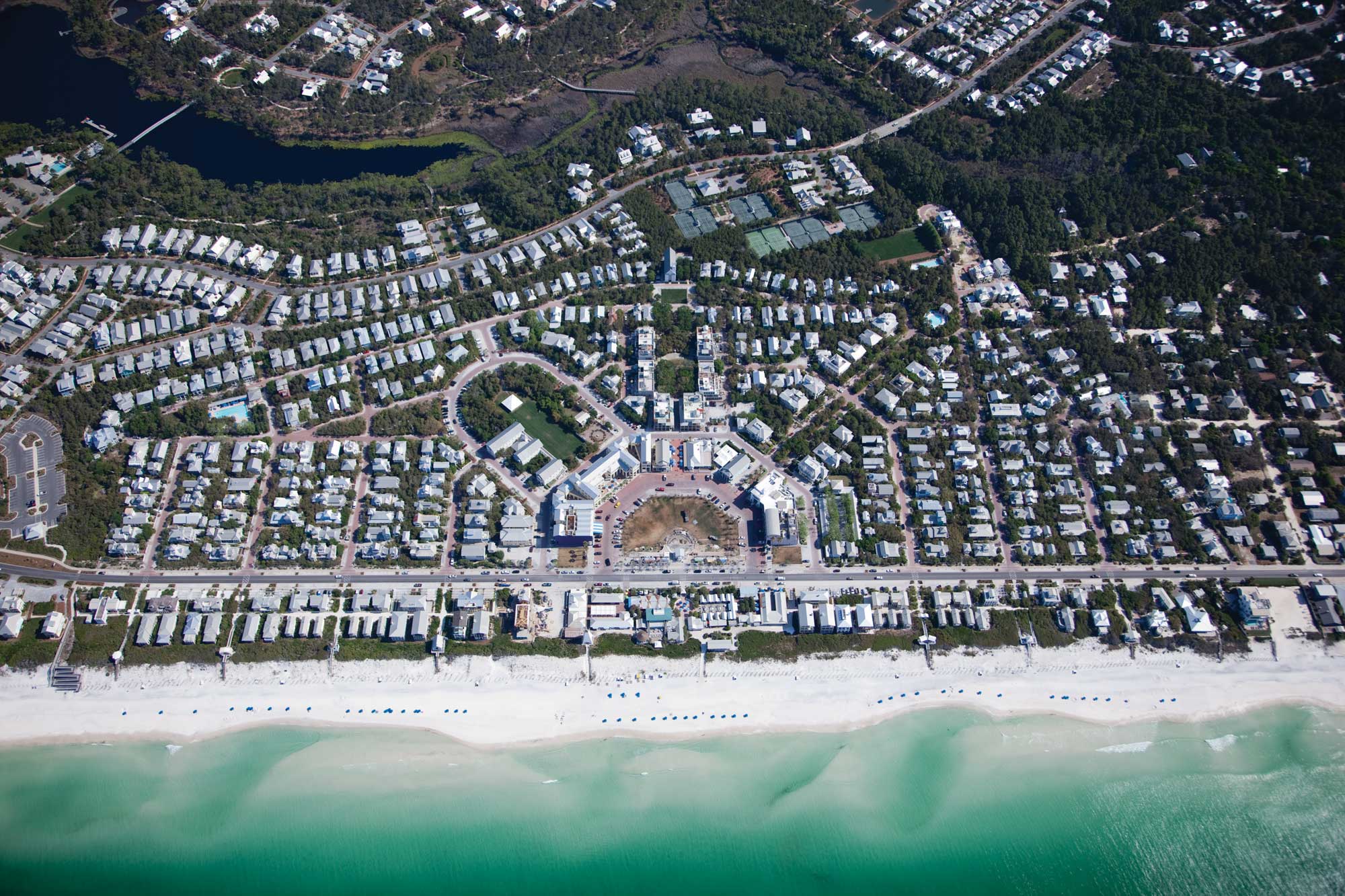
The workshop will help participants, and Walton County, answer the following questions:
- How can communities maximize the benefits of, and minimize the potential harms from, autonomous vehicles? How can this be done on the 30A corridor? In particular:
- How should streets be designed and managed?
- How should transit be designed and operated?
- How should parking be designed and managed?
- How can and how should bicycling and walking be made safe, comfortable, and convenient?
- How can and how should land uses evolve?
- How will these street design, transit, parking, and land use recommendations address key issues, such as traffic congestion, environmental sustainability, economic development, and place making?
- Several organizations have published documents which offer recommendations for harnessing autonomous vehicles. These include the National Association of City Transportation Officials' (NACTO) Blueprint for Autonomous Urbanism and the American Planning Association's Policy Principles for Autonomous Vehicles. What are the strengths and weaknesses of these two documents? Should all or some of their recommendations be applied to the 30A corridor?
- What are the design challenges – in particular, along 30A – that should be addressed before AVs are introduced? What design challenges need to be addressed as they become widespread?
The workshop will be held at the Seaside Institute in Seaside, FL.
Thursday | February 6th
WELCOME
9:00 – 9:15 AM
Speaker: Elizabeth Plater-Zyberk, Principal, DPZ CoDESIGN
THE AV CONUNDRUM: A GUIDE TO DESIGNING PLACES IN AN AUTONOMOUS AGE
9:15 – 10:05 AM
Speaker: Patrick Siegman, Principal, Siegman & Associates
Patrick presents NACTO’s Blueprint for Autonomous Urbanism and discusses how its designs and ideas can be applied to Seaside and the other communities along the 30A corridor.
BREAK
10:05 – 10:20 AM
A TRANSIT VISION FOR WALTON COUNTY
10:20 – 11:10 AM
Speaker: Larry Gould, Principal, Nelson\Nygaard
Larry discusses what it means to create a transit plan to serve the people who live, work, and play along the 30A corridor, in light of the development of autonomous technologies.
PRICING PARKING AND TRAVEL RIGHT
11:10 AM – 12:00 PM
Speaker: Patrick Siegman, Principal, Siegman & Associates
Patrick talks parking policy reforms and congestion pricing, and how they can maximize the benefits and minimize the potential harms from AVs.
LUNCH
12:00 – 1:00 PM
REIMAGINING ROUTE 30A
1:00 – 1:50 PM
Speaker: Rick Hall, President, Hall Planning & Engineering Inc.
Rick talks about future designs for Route 30A and other streets along the 30A corridor, that will help them harness AVs without compromising the corridor's walkable character.
THE INFRASTRUCTURE OF AUTONOMOUS VEHICLES
1:50 – 2:40 PM
Speaker: Joachim Taiber, Chief Technology Officer, International Transportation Innovation Center
Joachim discusses the technical capabilities of AVs and what infrastructure they will need to take to the road.
BREAK
2:40 – 3:00 PM
A FUTURE LAND USE AND TRANSPORTATION VISION FOR THE 30A CORRIDOR
3:00 – 4:50 PM
Facilitator: Elizabeth Plater-Zyberk, Principal, DPZ CoDESIGN
Building on the conversations of the day, participants address how communities can maximize the benefits of, and minimize the potential harms from, autonomous vehicles, in particular along the 30A corridor.
CLOSING AND NEXT STEPS
4:50 – 5:00 PM
Speaker: Elizabeth Plater-Zyberk, Principal, DPZ CoDESIGN
Demonstration of Autonomous Vehicles
A demonstration of autonomous vehicles will occur on Friday, February 7th from 10:00 AM – 4:00 PM and Saturday, February 8th from 10:00 AM - 4:00 PM.
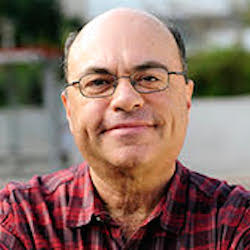 |
Larry GouldLarry is a transportation planner with over 35 years of experience in public transit planning and operations. At Nelson Nygaard, Larry works on transit plans ranging from high capacity rail projects to community and campus circulators. As a member of the national Board of the Congress for the New Urbanism, as well as a founder of the New York Chapter, Larry advocates for reinforcing good development decisions with good transit decisions. Previously, Larry served in various capacities in the Operations Planning division of Metropolitan Transportation Authority (MTA) New York City Transit where he was responsible for short-term service planning for bus and rail, including planning for capital projects, construction, contingencies, and special events. He has created systems for implementing tens of billions in capital investment while maintaining nearly full service for customers as well as service plans for every major event and venue, and every potential and actual disaster, affecting New York City, including delay management for everyday problems. A member of the MTA’s Blue Ribbon Sustainability Commission, he helped developed MTA’s Smart Growth and transit-oriented development program. |
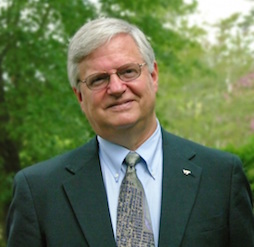 |
Rick HallRick Hall is a practicing, registered transportation engineer and for 23 years, President of Hall Planning & Engineering, Inc. He is registered in 22 states and is committed to understanding the established neighborhood vision and context before transportation design is undertaken. After earning his Bachelor’s and Master’s degrees in Civil Engineering at Virginia Tech, he worked for the Florida Department of Transportation for eight years, where he served as the Regional Planning Engineer for urban studies in the Tampa Bay region. Since becoming a consultant in 1980, Mr. Hall has worked on a variety of projects including urban transportation plans, hurricane evacuation planning, level of service analysis, scenic highway planning, and transportation / land use relationships. |
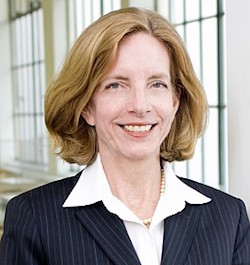 |
Elizabeth Plater-ZyberkElizabeth Plater-Zyberk is a founding principal of DPZ Partners, and the Malcolm Matheson Distinguished Professor of Architecture at the University of Miami where she directs the Master in Urban Design Program, after 18 years as dean of the School of Architecture. Plater-Zyberk is a founder of the Congress for the New Urbanism, an organization established in 1993 to promote walkable, resilient urban design. She is co-author of Suburban Nation: The Rise of Sprawl and the Decline of the American Dream and The New Civic Art: Elements of Town Planning. At DPZ, Plater-Zyberk leads and manages projects ranging from individual building design to new community design, community rebuilding, regional plans, and zoning codes--including Miami 21, a form-based code for the City of Miami, approved in 2010 and currently in use. Her work with partner Andres Duany, has been widely recognized by awards such as the Richard H. Driehaus Prize for Classical Architecture and the APA National Planning Excellence Award for Best Practice for Miami 21. With degrees from Princeton University and the Yale School of Architecture, Plater-Zyberk lectures frequently and has been a visiting professor at a number of universities in the United States. |
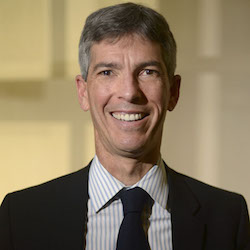 |
Patrick SiegmanPatrick Siegman is a transportation planner and economist. For more than 24 years, his practice has focused on planning and designing walkable cities and sustainable transportation systems. He is founding principal of Siegman & Associates, a transportation planning firm based in San Francisco. Patrick has led the transportation and parking component of more than 70 citywide, neighborhood, district, and campus plans. His projects have won awards from the Congress for the New Urbanism, the American Institute of Architects, the American Planning Association, and the Society for College and University Planning. Patrick also served as an advisor to San Francisco's ground-breaking SFpark program, known as perhaps the nation's most far-reaching implementation of advanced parking technologies and pricing policies. A graduate of Stanford University with honors, Patrick has taught short courses for the American Institute of Certified Planners and other organizations. He has also written for Planning, Planning for Higher Education, and Parking Today, and is the co-author of chapters in New Urbanism: Best Practices Guide; Sustainable Transportation Planning; and Parking and the City. |
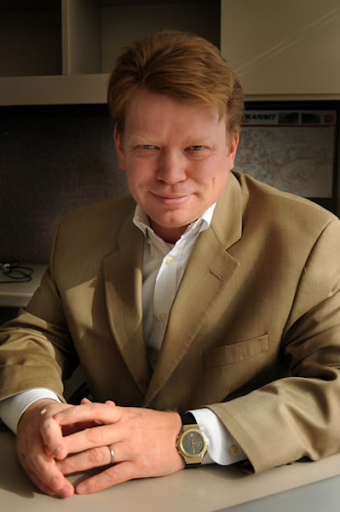 |
Joachim TaiberA top authority in the field of mobility testing and validation, Dr. Taiber consults with companies, communities, and research organizations on the development of testbeds for automated, connected, and sustainable transportation systems. A native of Germany, Dr. Taiber received formal academic training at the Swiss Federal Institute of Technology in Zurich, Switzerland, where he obtained a master’s degree in Mechanical Engineering and a PhD in Technical Sciences. His career in the automotive industry began with BMW AG in Munich. In 2003, he helped plan the BMW Information Technology Research Center (ITRC) at the Clemson University International Center for Automotive Research (CU-ICAR) in Greenville, SC. In 2010, Dr. Taiber joined Clemson University as a research professor and faculty member of the Department of Automotive Engineering at CU-ICAR. He created the Sustainable Mobility Institute where he served as director and focused on research activities in the domain of vehicle electrification, vehicle connectivity and vehicle-infrastructure interaction. |
The introduction of new transportation technologies like autonomous vehicles (AVs) will affect more than just how we travel in large cities. How can smaller communities envision a future for land use and transportation that maximizes the benefits of AVs, while minimizing their potential harms?
This workshop examined these broad, challenging mobility issues for cities and towns by exploring their design implications for Route 30A in Walton County, Florida. As the road that provides a vital link between the New Urbanist community of Seaside and other communities along this coast and the rest of the county, Route 30A is an important test of how to reconcile design for local walkability with the demands of new mobility technologies.
Participants in the workshop examined the land use and transportation vision for the Route 30A corridor, to enhance the integrity of community walkability and livability while at the same time planning for the transportation developments of future decades.
Photo: Seaside, from the air. Credit: Alex S. MacLean, Landslides Aerial Photography

